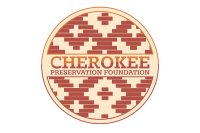Withstanding winter’s cold
Editor’s note: George Ellison is on sabbatical this week and will return next week. This is a previously published column.
As I write this on Monday morning, we’ve just had our initial hard frost of the year here in Swain County. For the first time in seven or so months, I had to dig around and find my windshield scraper. While scraping away at the windshield with nearly frozen hands, I heard the birds in our backyard calling to one another as they trundled back and forth from the shrubbery to the feeders. They seemed excited that cold weather was finally arriving.
Because most birds seem so delicate and vulnerable, many of us go out of our way to feed those that overwinter here in the mountains. This no doubt helps maintain bird populations at a higher level than would otherwise be the case. But our feathered friends long ago devised basic strategies for withstanding wind and cold which are both effective and ingenious.
For the most part, it’s the insect-eating birds that migrate south. Those that stay behind are either seed eaters or insect eaters that have perfected techniques that allow them to extract morsels hidden behind and between the bark of trees, as do woodpeckers and nuthatches.
It’s not difficult to observe birds preening themselves with their bills and feet to carefully clean, rearrange, and oil their feathers. They do so, in part, to maintain flight capabilities, but in winter the process is essential for heat regulation. Birds have a “preen gland” located on their rumps just below the upper tail feathers. Oil squeezed from this gland is rubbed over the body as a waterproofing agent.
Birds have more than 25 percent more feathers in winter than during the summer months. Growing beneath the large, outer flight feathers are tiny, tuft-like, down feathers that provide one of the world’s most effective heat traps. It’s the same stuff humans have adapted for use in hats, coats, and other cold-weather apparel.
Related Items
When fluffed and preened into position, these feathers trap a layer of warm air next to the bird’s body that prohibits the loss of body heat. At night or when it’s really cold during daylight hours, birds tuck their heads back under their body feathers into this warm-air source. This head-tucking technique allows them to breathe pre-warmed air and further cut down on energy expenditure.
What about their bare legs? You’ve no doubt observed birds standing one-legged on a bare branch. The seemingly missing appendage was lifted up beneath the lower feathers into that warm-air zone. The exposed leg was protected by a physical adaptation ornithologists call the “counter-current heat exchange system.” Via this system, leg arteries and veins are placed side by side so that heat in the arteries coming directly from the heart warms the chilled blood in the veins and keeps the lower extremities unfrozen. Unlike my hands, beaver tails, whale fins, and many other types of exposed animal limbs are protected in this fashion.
Making it through the night is the most challenging task facing birds during the winter months. Like humans, birds shiver involuntarily as a warming reflex, and when all else fails they, like humans, huddle and snuggle together. Finches, sparrows, crows, jays, and doves roost in dense conifers to reduce heat loss. Species such as brown creepers, white-breasted nuthatches, winter wrens, and bluebirds sometimes join one another in bird boxes or tree cavities.
There are birds in other parts of the world that actually hibernate like woodchucks, snakes, and other animals. Here in the Smokies region, the chickadee is the bird that comes closest to utilizing hibernation as a technique. This process — which is called either “controlled hypothermia” or “overnight hibernation” — reduces the rate of heat loss from a chickadee by reducing the temperature difference between the bird’s body and the surrounding air. Shivering is stopped so that body temperature drops until a level of hypothermia is reached. On a really cold night, a chickadee can allow its temperature to drop up to 12 degrees, resulting in a large overnight energy savings. The only problem is waking up quickly enough from this torpid state when a predator happens along.
George Ellison wrote the biographical introductions for the reissues of two Appalachian classics: Horace Kephart’s Our Southern Highlanders and James Mooney’s History, Myths, and Sacred Formulas of the Cherokees. In June 2005, a selection of his Back Then columns was published by The History Press in Charleston as Mountain Passages: Natural and Cultural History of Western North Carolina and the Great Smoky Mountains. Readers can contact him at P.O. Box 1262, Bryson City, N.C., 28713, or at This email address is being protected from spambots. You need JavaScript enabled to view it..









